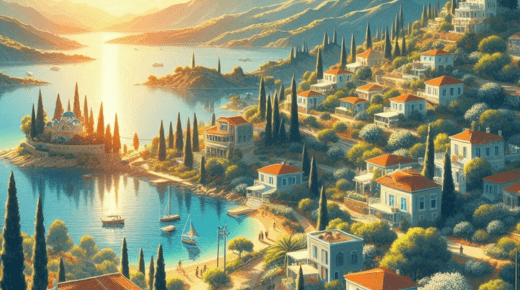By Dr. Pooyan Ghamari, Swiss Economist
Dubai’s architectural landscape is experiencing a remarkable shift, particularly in the design of contemporary villas. This transformation reflects a sophisticated blend of cultural heritage, cutting-edge technology, and an increasing focus on sustainability, redefining what luxury living means in the 21st century.
A Revival of Tradition
One of the most striking aspects of the evolving villa designs in Dubai is the reintegration of traditional Arabian architectural elements into modern settings. Historically, Dubai’s architecture has been deeply influenced by Islamic art and traditional design principles, characterized by features such as geometric patterns, intricate lattice work, and expansive courtyards. These elements, once the hallmark of classic Arabian design, are now being reinterpreted in contemporary villas, offering a seamless blend of the old and the new.
For example, the use of Mashrabiya—ornate wooden screens that provide privacy and shade—has been revived in modern villa designs. These features not only add a distinctive aesthetic appeal but also improve energy efficiency by reducing direct sunlight and promoting natural ventilation. Similarly, traditional wind towers, known as Barjeel, have been reintroduced to enhance air circulation, reflecting a commitment to sustainable living while paying homage to the architectural heritage of the region.
Embracing Sustainability
In line with global trends, Dubai’s contemporary villas are increasingly adopting sustainable design practices. Architects and developers are now prioritizing eco-friendly materials, energy-efficient systems, and water conservation techniques. Solar panels, green roofs, and recycled construction materials are becoming standard features in new developments, reflecting Dubai’s ambition to lead in sustainable urban living.
Moreover, the concept of biophilic design—an approach that seeks to connect residents with nature—is gaining traction. Villas are being designed with expansive gardens, rooftop greenery, and indoor plants, creating a harmonious living environment that promotes well-being and reduces the carbon footprint. This integration of nature into urban living spaces not only enhances the aesthetic value but also contributes to a healthier and more sustainable lifestyle.
The Rise of Smart Homes
Technology is another driving force behind the transformation of villa architecture in Dubai. The advent of smart home systems has revolutionized the way residents interact with their living spaces. Modern villas are now equipped with advanced automation systems that control lighting, temperature, security, and entertainment with the touch of a button or a voice command.
These smart technologies are not just about convenience; they also contribute to energy efficiency and security. For instance, automated blinds can adjust to natural light levels, reducing the need for artificial lighting, while smart thermostats optimize heating and cooling, leading to significant energy savings. Security features such as facial recognition, smart locks, and surveillance systems ensure that residents enjoy peace of mind in their luxurious homes.
Integration of Indoor and Outdoor Spaces
Another key trend in the design of contemporary villas in Dubai is the seamless integration of indoor and outdoor spaces. The traditional separation between these areas is becoming increasingly blurred as architects seek to create more open, fluid living environments. Large sliding glass doors, expansive terraces, and infinity pools that extend into the landscape are common features in these new designs.
This approach not only maximizes the use of space but also takes advantage of Dubai’s unique climate and stunning views. By merging indoor and outdoor areas, these villas offer a more connected living experience, where residents can enjoy the natural beauty of their surroundings from the comfort of their homes.
Looking Ahead: The Future of Villa Architecture in Dubai
The architectural evolution of Dubai’s villas is set to continue, driven by advancements in technology, a deepening commitment to sustainability, and a renewed appreciation for cultural heritage. The future will likely see even more innovative designs that further blur the boundaries between tradition and modernity, technology and nature.
In conclusion, the changing landscape of villa architecture in Dubai is a testament to the city’s ability to adapt and innovate. By combining traditional elements with modern technology and sustainable practices, Dubai is setting new standards for luxury living. These villas are more than just homes; they are reflections of a city that honors its past while looking boldly into the future. As this evolution continues, Dubai will remain a global leader in architectural innovation, offering a unique blend of culture, technology, and sustainability that is unparalleled anywhere in the world.
This article was originally published on a.land. For more information and opportunities, visit shop.a.land.

